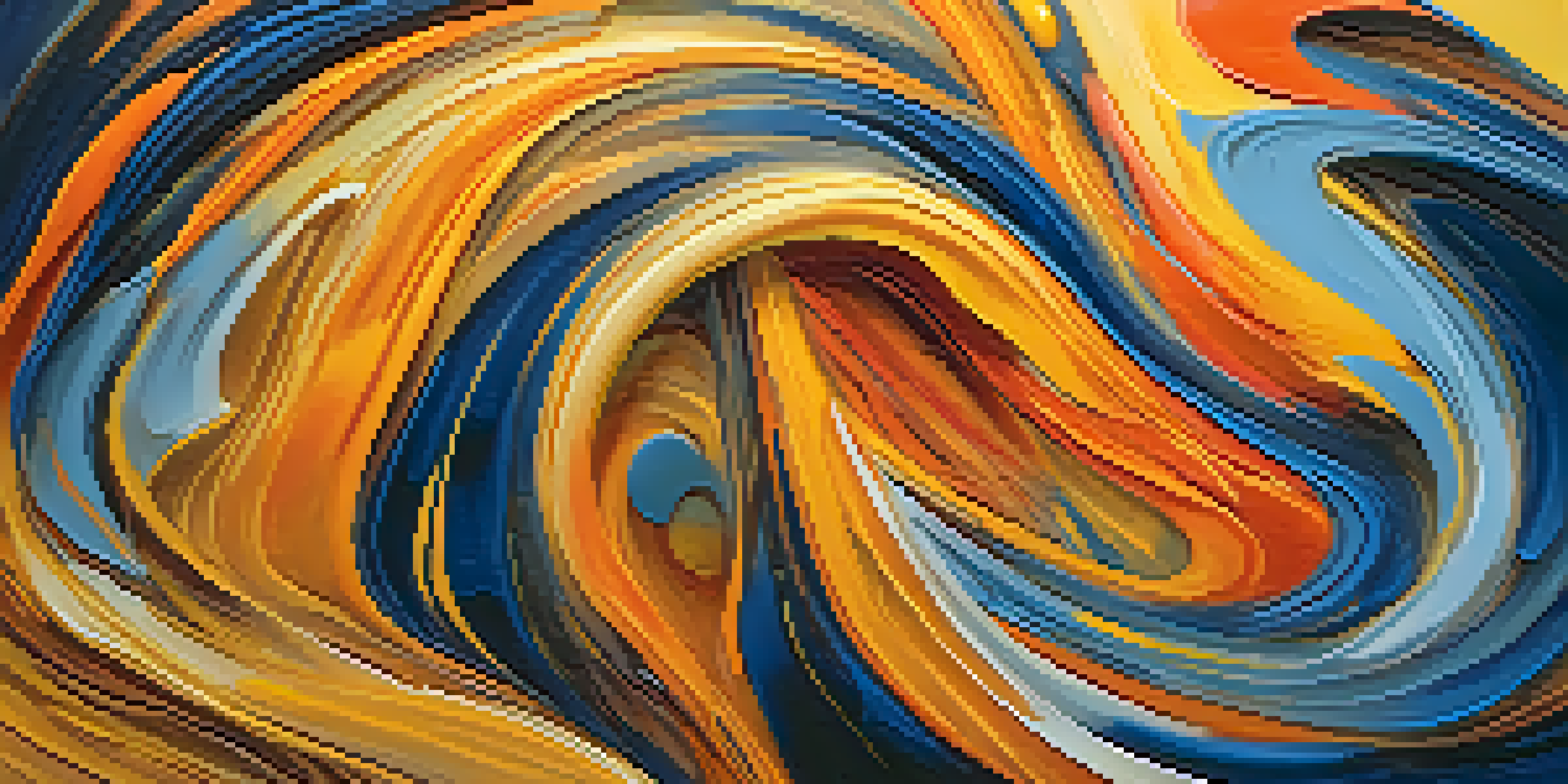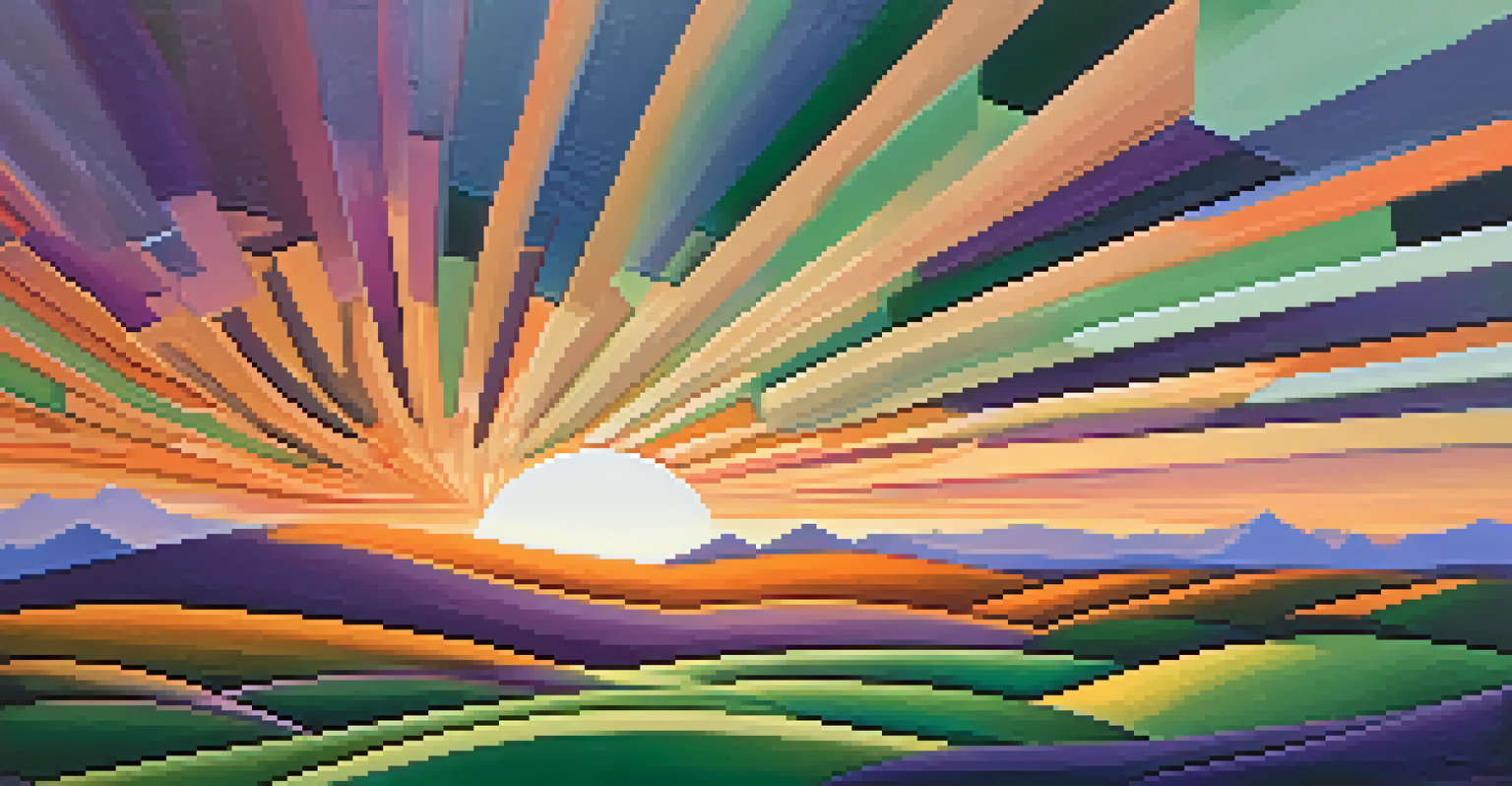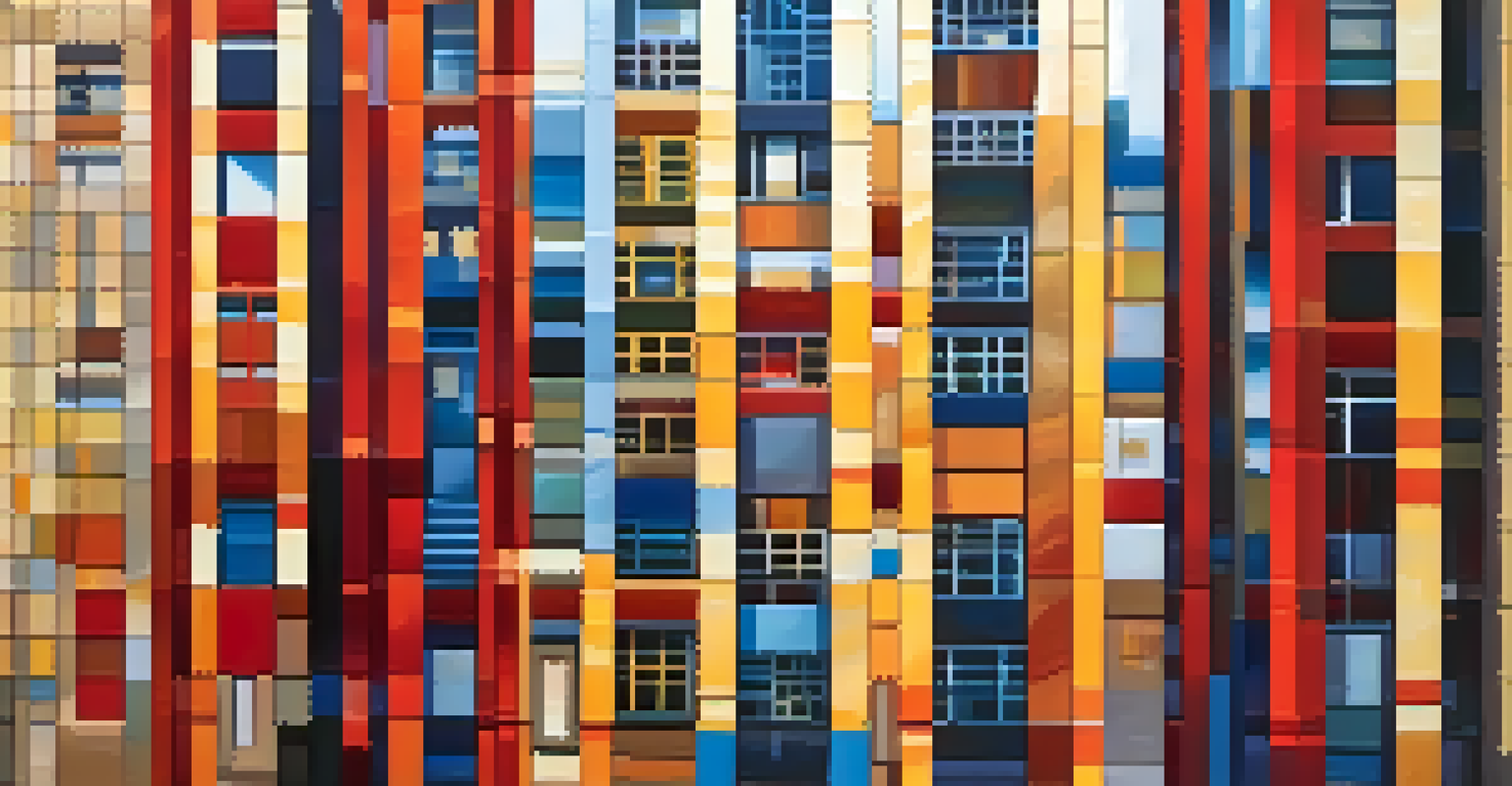Personal Narratives: The Artist's Journey in Abstract Art

Understanding the Essence of Abstract Art
Abstract art often stirs curiosity and confusion. Unlike traditional art, which depicts recognizable subjects, abstract art focuses on shapes, colors, and forms to evoke emotions and thoughts. This ambiguity allows artists to express feelings that words sometimes cannot capture.
Abstract art enables the artist to display emotional content rather than an external reality.
For many artists, creating abstract pieces is akin to sharing a personal diary. Each brushstroke can represent a moment, a feeling, or a memory, making the artwork deeply personal. This can lead viewers to interpret the art through their own experiences, forging a unique connection.
Ultimately, abstract art invites viewers to explore their interpretations. Just as each person has a unique story, every observer can derive different meanings from the same piece. This interaction between art and audience is what makes abstract art so compelling.
The Role of Personal Narratives in Art
Every artist carries a personal narrative that shapes their work. These narratives often stem from experiences, emotions, and reflections on life, which can all be channeled into their art. For instance, an artist who has faced hardships may express their journey through contrasting colors and chaotic forms.

Personal narratives serve as a bridge between the artist and their audience. When an artist shares their story, it invites viewers into a space of vulnerability and authenticity. This exchange creates a deeper appreciation for the artwork, as viewers may resonate with the struggles and triumphs depicted.
Abstract Art Evokes Personal Connection
Abstract art invites viewers to interpret emotions and experiences uniquely, fostering a deep bond between the artwork and its audience.
Moreover, personal narratives can evolve over time, influencing how artists approach their work. As they grow and change, so too does their art, creating a dynamic relationship. This evolution showcases the journey of both the artist and their narrative, adding layers of meaning to their creations.
Finding Inspiration in Everyday Life
Artists often find inspiration in the mundane aspects of life. A simple walk in the park, a conversation with a friend, or even a fleeting thought can spark creativity. Capturing these moments and expressing them through abstract art allows artists to transform the ordinary into something extraordinary.
Art is not freedom from discipline, but disciplined freedom.
For instance, an artist may observe the interplay of light and shadow during a sunset and use that experience to create a vibrant piece. By translating everyday occurrences into art, they not only document their experiences but also encourage viewers to notice beauty in their surroundings.
This approach emphasizes the importance of mindfulness in the artistic journey. When artists are attuned to their environment and emotions, they can create work that feels authentic and relatable. This connection fosters a sense of community among artists and viewers alike.
The Journey of Self-Discovery Through Art
Creating abstract art can be a profound journey of self-discovery. As artists explore their emotions and experiences, they often uncover hidden aspects of themselves. This process can be both enlightening and challenging, as confronting personal truths may lead to vulnerability.
Artists might find that their work reflects their inner battles, triumphs, and growth. This can result in a cathartic release, allowing them to process feelings and experiences that may have been buried. The act of creating becomes a therapeutic outlet, facilitating emotional healing.
Personal Narratives Shape Artistic Vision
Artists channel their life experiences and emotions into their art, creating works that resonate with viewers through shared vulnerability.
Moreover, this journey doesn't end with the completion of a piece. Each artwork serves as a benchmark of the artist's growth, marking different stages of their life. As they reflect on their creations, they gain insights into their personal evolution, enriching their artistic journey.
Challenges Faced by Abstract Artists
While creating abstract art can be rewarding, it also comes with its own set of challenges. Artists may struggle with self-doubt, questioning whether their work truly conveys their intended message. This internal conflict can be disheartening but is a common part of the creative process.
Additionally, artists may face external criticism or misunderstanding from audiences. Because abstract art is open to interpretation, some viewers may not grasp the artist's narrative or intention. Navigating these reactions requires resilience and a strong belief in one's artistic vision.
However, overcoming these challenges can lead to significant growth. Artists learn to trust their instincts and embrace the uniqueness of their work. This journey not only strengthens their artistry but also fosters a deeper connection with their personal narrative.
The Impact of Community on Artistic Growth
Artistic communities play a vital role in an artist's journey. Engaging with fellow artists can provide support, inspiration, and constructive feedback. This sense of community helps artists feel less isolated in their creative pursuits and encourages them to share their personal narratives.
Collaboration can also lead to new perspectives on art and storytelling. By exchanging ideas and experiences with others, artists can discover fresh approaches to their work, pushing the boundaries of their creativity. These interactions often lead to innovative projects that may not have been possible alone.
Community Enhances Artistic Growth
Engaging with fellow artists provides support and inspiration, helping individuals evolve their creative processes and narratives.
Ultimately, being part of an artistic community fosters a sense of belonging. It reinforces the idea that every artist's journey is unique yet interconnected, creating a rich tapestry of shared experiences. This collective narrative adds depth to the abstract art world.
Reflecting on the Artistic Journey
As artists look back on their journey, they often reflect on how their experiences have shaped their work. This reflection can reveal patterns in their artistic development and highlight significant moments of growth. Understanding these connections allows artists to appreciate their progress over time.
Moreover, this introspection can inspire future projects. By revisiting past narratives, artists may find new themes to explore or concepts to develop further. This cyclical nature of reflection and creation keeps the artistic process vibrant and ever-evolving.

Ultimately, the journey of an abstract artist is as important as the artwork itself. Each piece serves as a testament to their personal narrative, capturing a moment in time that resonates with both the artist and the viewer. This connection reinforces the value of storytelling in the realm of abstract art.